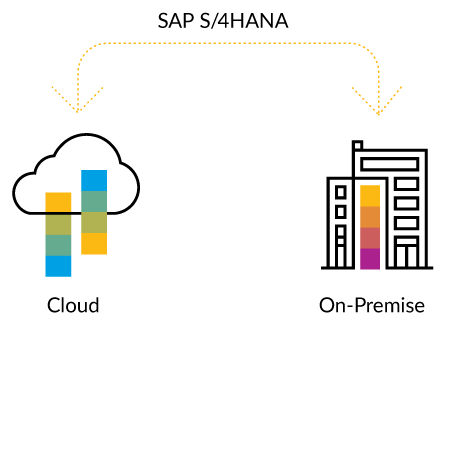Join the SAP S/4HANA Movement
SAP S/4HANA, as the new digital core, provides a foundation to help leading enterprises uniquely deliver on new industry priorities.These are considerations when determining your transition path.
1, Business Objectives

Business Model Innovation
This organization is wanting to enable changes to its business to react to changing markets, competitors, or to offer new models of customer engagement.

Business Process Optimization
This organization is not looking to make broad changes to its business models but does want to improve the efficiency of existing processes or automate them.

ERP Rapid Modernization
This organization wants to upgrade ERP with minimal disruption to the business.
2, Transition Options
New Implementation
The customer deploys a new instance of SAP S/4HANA and migrates their data from their old ERP, which could be an SAP or non-SAP system. This is the best approach for customers wanting a clean start and is likely then to be used with Business Model Innovation. New Implementations can be performed in the cloud, on-premise, or hybrid.
System Conversion
The customer starts with an ECC 6.x system and converts it to S/4HANA, migrating the data to HANA as part of that process. This preserves the existing configuration and customization, as long as those customizations will work with S/4HANA or can be adapted to work with S/4HANA. As such, this is the approach likely to be used with ERP Rapid Modernization. System Conversions can only be done to an on-premise deployment, which includes running S/4HANA in HEC (or a partner service) or on IaaS (Azure, AWS, Google Cloud).
3, Destination Options
When it’s time to deploy SAP S/4HANA, the choice is yours: on-premise or in the cloud.
Either way, S/4HANA maintains consistency with the data model and user experience. This is an important differentiator. Some other vendors have acquired different cloud ERP products, inconsistent from their on-premise ERP products, creating an integration nightmare, whereas others only offer public cloud, in which case, if your business requirements do not match their standard processes, you’re out of luck. Only S/4HANA and S/4HANA Cloud offer a consistent solution, allowing you to benefit in any scenario or combination.

4, Other Considerations When Determining Your Transition Path

Do current business processes support your long-term strategy?
Strategic redesign of business processes suggests a new implementation.

Can you adopt SAP Best Practices or will you retain past customizations?
A move to standardization brings agility, suggesting a new implementation.

Is your move to SAP S/4HANA driven by the business or IT?
IT sponsored projects are typically conversions to SAP S/4HANA, which lay the foundation for incremental innovation projects driven by the business.

Can you convert from SAP ERP to SAP S/4HANA in a single step?
Single-step conversion is possible for SAP ERP 6.x (any enhancement pack) single stack, Unicode systems. According to SAP statistics, a majority of our customers fulfill this criterion.

Do you require previous transactional data in the new system?
The requirement to retain all data in the system is a very strong indication for conversion. Alternatively, consider a new implementation if re-platforming your current ECC data on commodity hardware or leveraging data retention solutions.

Is landscape consolidation and process harmonization a key value driver?
Consider a new implementation and consolidate the required configuration and data into that new system.

High or low number of interfaces to other systems (SAP and third-party)?
The higher the number of interfaces, the stronger is the case for conversion.
